Celebrity
Who Is Vida Guerra?: The Untold Story of the Cuban-American Glamour Icon

The early 2000s marked the emergence of many pop culture sensations, but few became as iconic as Vida Guerra. She didn’t just break into the modeling industry; she redefined it. At a time when fashion and glamour predominantly celebrated tall, slim models, Vida Guerra’s unapologetic curves, sultry looks, and undeniable charisma opened a much-needed conversation about body positivity and diversity in mainstream media. She wasn’t just a model — she was a cultural phenomenon. Today, Guerra remains a symbol of empowerment, particularly for Latina women, proving that beauty comes in diverse forms and sizes. But who exactly is Vida Guerra? Where did she come from, and what has her journey been like? This article delves deep into her lifestyle.
Quick Bio
| Attribute | Details |
| Full Name | Vida Guerra |
| Date of Birth | March 19, 1974 |
| Place of Birth | Havana, Cuba |
| Nationality | Cuban-American |
| Occupation | Glamour Model, Actress, Singer |
| Known For | Modeling, Magazine Covers, TV & Film |
| Years Active | 2002 – Present |
| Height | 5 feet 3 inches (1.60 meters) |
| Notable Work | FHM, Playboy, Music Videos |
Early Life: From Havana to New Jersey
Vida Guerra was born on March 19, 1974, in Havana, Cuba. Like many Cuban families, her parents sought a better life away from the political and economic constraints of the island. When Guerra was just a child, her family migrated to the United States, eventually settling in Perth Amboy, New Jersey. Growing up in a Cuban household in the U.S. meant Guerra was raised on traditional values, a strong sense of cultural identity, and a passion for life that is characteristic of many Cuban-Americans.
Despite her modest upbringing, Guerra always stood out. Her classmates in school noticed her striking features and natural curves, which were not yet the cultural asset they would later become. At the time, mainstream beauty ideals did not favor women with her body type. Nonetheless, her heritage, confidence, and distinct appearance quietly set the stage for what would become a groundbreaking career.
The Accidental Discovery
Vida Guerra’s journey to fame was, interestingly, unplanned. In 2002, she participated in an amateur photo submission for FHM magazine. She wasn’t a professional model at the time, but the pictures published in the magazine’s lingerie section garnered an overwhelming response from readers. The magazine received more letters and emails about Guerra than any previous feature, prompting editors to invite her back for more photo shoots.
What started as a simple photoshoot escalated quickly into full-fledged fame. Suddenly, Guerra was in high demand, with magazines, photographers, and fans eager to see more of her. She became a regular feature in FHM, eventually earning the title of “FHM’s Model of the Year” in 2004. This recognition was just the beginning of a highly successful modeling career that would make Guerra a household name.
Redefining Beauty Standards in the Early 2000s
At a time when the modeling industry was still very much aligned with the thin, tall, and predominantly white aesthetic, Vida Guerra stood out as a powerful alternative. She was petite, standing at only 5’3″, but had a curvaceous figure that defied conventional norms. Her body type was not just different — it was revolutionary.
Guerra’s success led to broader conversations about body positivity and representation. She was particularly impactful in elevating the visibility of Latina women in American media, a demographic that had often been stereotyped or ignored entirely. In many ways, her popularity predated and perhaps contributed to the growing acceptance of more diverse beauty standards, seen today with the rise of models of varying ethnicities, body sizes, and backgrounds.
The Latina Cultural Icon
For many young Latinas in the United States and abroad, Vida Guerra became more than just a model — she was a cultural icon. She represented success, beauty, and confidence in a world that rarely made space for women who looked like her. Guerra was frequently celebrated not only for her looks but for her outspoken pride in her Cuban heritage.
She often incorporated her cultural background into her public persona, openly discussing her upbringing, the influence of her family, and her experiences as a Cuban immigrant. This transparency resonated deeply with fans, adding layers to her image beyond mere physical beauty. Through her, many Latinas felt seen, appreciated, and empowered to embrace their identities.
A Multifaceted Career: Beyond the Magazines
While modeling was the cornerstone of her fame, Vida Guerra didn’t stop there. She expanded her portfolio to include acting, music, and television appearances. Guerra starred in numerous music videos, collaborating with major artists such as Kanye West, Nelly, and P.Diddy, contributing to the golden era of hip-hop and R&B visuals where models became as famous as the artists themselves.
Additionally, she ventured into acting, with roles in films and TV shows. Though her acting career didn’t reach the same heights as her modeling, it reflected her versatility and willingness to explore new avenues. She even dipped her toes into the world of music, releasing songs and expressing her creative flair through this medium, though she remained more acclaimed for her visual presence than her musical talents.
The Playboy Era and Personal Branding
In 2006, Guerra posed for Playboy, further solidifying her status as a glamour icon. The photoshoot was a natural progression in her career, given her widespread fame and the public’s fascination with her physique. The Playboy spread was significant because it wasn’t just about nudity — it was about cementing Guerra’s brand as the epitome of sensuality and allure.
Unlike many models of her era, Guerra actively took control of her image and brand. She navigated the fine line between glamour modeling and personal empowerment, ensuring that she maintained agency over her career choices. This strategic branding allowed her to sustain relevance, even as new faces entered the modeling scene.
Personal Life and Public Perception
Despite her high-profile career, Vida Guerra has largely kept her personal life private. Unlike many celebrities who thrive on constant media attention, Guerra has managed to maintain boundaries around her family, relationships, and private affairs. This discretion has added an air of mystery to her public persona, keeping fans intrigued and respectful of her privacy.
Over the years, she has also been a vocal advocate for fitness and healthy living, often sharing insights on exercise, nutrition, and wellness. Guerra transformed herself from being just a model to a fitness enthusiast and influencer, using her platform to encourage healthier lifestyles among her followers.
Where Is Vida Guerra Now?
Today, Vida Guerra continues to inspire and engage her fans through social media, particularly on platforms like Instagram, where she shares glimpses of her life, fitness routines, and personal thoughts. Although she is no longer as prominently featured in mainstream media as she was in the early 2000s, Guerra has successfully transitioned into a fitness influencer, entrepreneur, and occasional model.
She also uses her platform to support various causes, showing a more philanthropic and reflective side. Whether promoting wellness or advocating for self-love, Guerra’s presence remains influential, particularly for those who grew up admiring her.
The Lasting Legacy of Vida Guerra
Vida Guerra’s legacy is not merely defined by magazine covers or viral images — it’s about her enduring impact on representation, diversity, and body positivity. She carved a space in an industry that didn’t traditionally cater to women who looked like her and inspired a generation to embrace their uniqueness.
Her story is also a testament to the power of cultural pride, personal branding, and resilience. By staying true to herself, Guerra showed that success isn’t just about fitting into existing molds — sometimes, it’s about creating a new one altogether. Even today, aspiring models, particularly women of color, cite Vida Guerra as a trailblazer who made it possible to envision a broader and more inclusive definition of beauty.
Frequently Asked Questions (FAQs)
1. Who is Vida Guerra?
- Vida Guerra is a Cuban-American glamour model, actress, and singer who rose to fame in the early 2000s after appearing in FHM magazine. She is widely celebrated for her curvaceous figure and representation of Latina beauty.
2. Where was Vida Guerra born?
- Vida Guerra was born in Havana, Cuba, on March 19, 1974. She later moved to the United States with her family and grew up in New Jersey.
3. What is Vida Guerra doing now?
- Vida Guerra currently focuses on fitness, health advocacy, and social media influence. She remains active on platforms like Instagram, sharing workout tips, wellness advice, and personal updates.
4. Has Vida Guerra acted in movies or TV shows?
- Yes, Vida Guerra has appeared in various films, television shows, and music videos, particularly during the height of her fame in the 2000s.
5. Why is Vida Guerra significant in the modeling industry?
- Vida Guerra is significant because she challenged traditional beauty standards with her petite yet curvaceous figure. She also increased the visibility of Latina women in mainstream media and became a symbol of body positivity and cultural pride.
Celebrity
Who Is Maceo Shane Rapaport? Exploring the Young Talent Making Waves

Maceo Shane Rapaport is gradually emerging as a young personality in the public eye, not just as the son of actor Michael Rapaport, but as an individual with his own unique presence. Born into a family familiar with the entertainment industry, Maceo has had opportunities and experiences that many children his age cannot relate to. Despite his early exposure to fame, he has maintained a balance between public life and personal growth, demonstrating maturity beyond his years. Fans are increasingly curious about his life, interests, and potential future, making him a subject of interest for both the media and followers around the world.
Quick Bio Table
| Attribute | Details |
|---|---|
| Full Name | Maceo Shane Rapaport |
| Known For | Son of actor Michael Rapaport |
| Father | Michael Rapaport (Actor, Comedian, Director) |
| Mother | Nichole Beattie (Screenwriter, Producer) |
| Siblings | Julian Ali Rapaport (Older Brother) |
| Date of Birth | Early 2000s (Exact date undisclosed) |
| Nationality | American |
| Ethnicity | Mixed – Jewish and American heritage |
| Education | Reportedly attending college in the U.S. |
| Residence | Los Angeles, California |
| Interest Areas | Sports, media, and creative arts |
| Famous Relative | Michael Rapaport, known for Higher Learning, Boston Public, Atypical |
| Public Presence | Maintains a low profile but occasionally mentioned by his father |
Early Life and Family Background
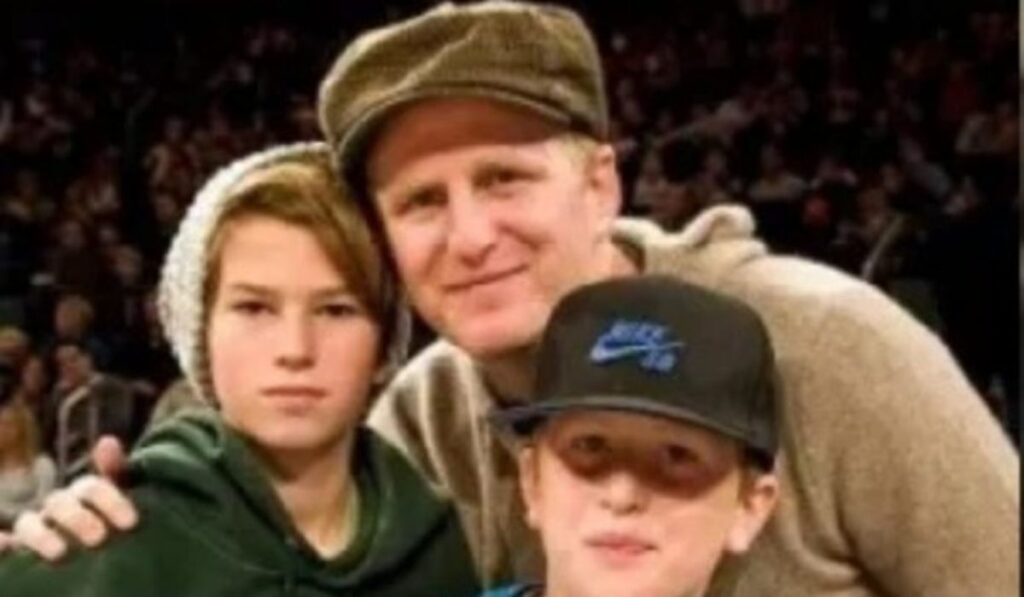
Maceo Shane Rapaport was born to Michael Rapaport, a highly regarded actor known for his performances in films such as True Romance, Higher Learning, and Any Given Sunday, as well as his work on television shows including Atypical and The War at Home. Growing up in a household immersed in the entertainment industry, Maceo was exposed to creativity and artistic expression from a young age. Michael Rapaport has often emphasized the importance of providing his children with a sense of normalcy, despite the spotlight that comes with his career. This environment allowed Maceo to observe and learn about the challenges and rewards of fame while still enjoying a supportive and grounded upbringing.
Personality and Character
Maceo Shane Rapaport is known for his charming and approachable personality. Friends and family describe him as curious, intelligent, and socially aware, with a natural ability to engage with people of all ages. Unlike many children of celebrities, Maceo has shown a preference for authenticity over seeking attention, which sets him apart from peers who are often thrust into the limelight without preparation. His personality is reflective of a generation that values self-expression, creativity, and individuality. Whether in casual social settings or in the presence of media, Maceo demonstrates a calm and confident demeanor, making him relatable to fans who admire both his authenticity and composure.
Education and Personal Development
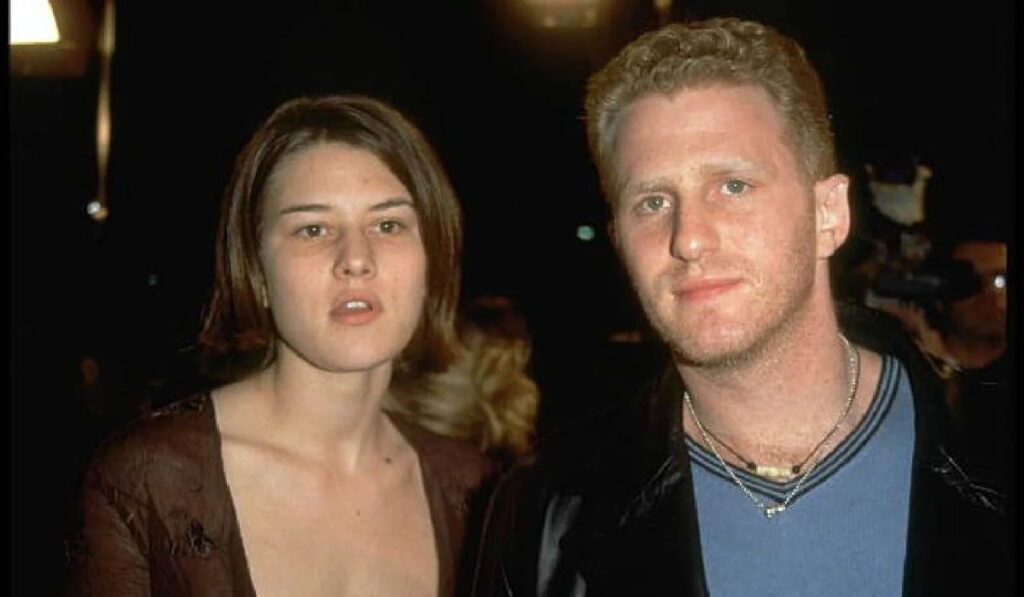
Despite his exposure to fame, Maceo Shane Rapaport’s education remains a priority for his family. Michael Rapaport has highlighted the importance of ensuring his children develop academically and personally, creating a foundation for success beyond celebrity influence. Maceo attends school like any other child his age, balancing academics with extracurricular activities such as sports, arts, and creative hobbies. These experiences foster critical thinking, discipline, and leadership skills, all of which are essential for young individuals navigating a world where public attention can be overwhelming. By maintaining a focus on education and personal development, Maceo is being prepared for a future where his talents and intellect will complement each other.
Interests and Hobbies
Maceo Shane Rapaport is a multi-faceted individual with a wide range of interests. From sports and music to digital media and creative arts, he has explored multiple avenues to develop his skills and express his individuality. Participation in sports has not only helped him build physical strength and stamina but also instilled values such as teamwork, perseverance, and discipline. Music and the arts provide an outlet for creativity and personal expression, allowing him to connect with peers and mentors who share similar passions. These hobbies contribute to Maceo’s well-rounded development and lay the groundwork for potential career opportunities in entertainment or other creative fields.
Influence of Michael Rapaport
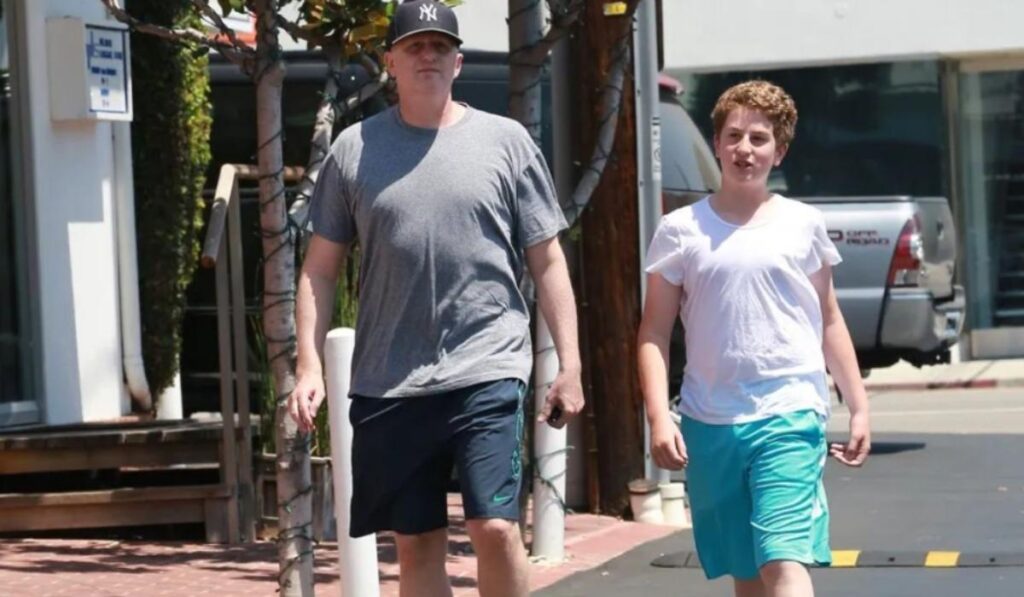
Having a father like Michael Rapaport brings both advantages and challenges. On one hand, Maceo has access to mentorship, industry knowledge, and professional networks that can accelerate his development. On the other hand, the inevitable comparisons to a famous parent can create pressure for a young individual seeking to define their own identity. Michael Rapaport has publicly expressed his desire for Maceo to pursue his own interests rather than simply follow in his footsteps. This supportive approach allows Maceo to explore opportunities at his own pace, gaining confidence and skills without being overshadowed by his father’s career. The guidance provided by Michael ensures that Maceo is nurtured in a way that balances freedom and structure.
Growing Public Presence
Maceo Shane Rapaport’s presence on social media and in public events has gradually increased, reflecting both his curiosity about the world and his family’s influence. Through carefully curated social media posts, he shares glimpses of his daily life, hobbies, and personal milestones. This growing presence allows fans to connect with him while providing Maceo with a platform to explore self-expression. Public appearances at premieres, charity events, or family gatherings also contribute to his comfort with media exposure. By experiencing these situations early, Maceo is learning valuable lessons about public interaction, personal branding, and media literacy, skills that will be essential for any future endeavors in the entertainment industry.
Challenges of Growing Up in the Spotlight

One of the significant challenges for Maceo Shane Rapaport is navigating adolescence while under public attention. Children of celebrities often face scrutiny that can affect self-esteem, privacy, and personal growth. Maceo’s family has taken measures to ensure that he enjoys a relatively normal childhood, shielded from excessive media intrusion. Balancing fame with privacy is an ongoing process, requiring maturity and support from his family. By maintaining healthy boundaries and prioritizing personal development, Maceo is learning how to manage public attention responsibly, preparing him for any future role that may place him in the spotlight.
Future Ambitions and Career Possibilities
While Maceo Shane Rapaport is still young, there is growing interest in what he may pursue as he matures. Whether he chooses to follow in Michael Rapaport’s footsteps in acting, pursue a career in music, digital media, or another creative field, his upbringing and interests position him for success. Observers note that Maceo’s curiosity, creativity, and intelligence suggest that he could excel in multiple areas if given the right opportunities. His current experiences, combined with mentorship and personal growth, are setting the stage for a potential future where he could become a recognized name in his own right.
Influence on Young Fans
Even at a young age, Maceo Shane Rapaport has become a figure of inspiration for peers and younger audiences. His approach to balancing public life with personal development sends a positive message about authenticity, responsibility, and pursuing passions. Fans appreciate that he is developing his skills and personality naturally, rather than succumbing to pressures of early fame. This influence extends beyond entertainment, highlighting the importance of integrity, creativity, and resilience in achieving long-term success. As Maceo continues to grow, his impact on fans and followers is likely to expand, making him a role model for young individuals navigating modern challenges.
Balancing Normal Life with Opportunities
One of the key aspects of Maceo Shane Rapaport’s growth is learning to balance normal life experiences with opportunities that come from being part of a famous family. Engaging in ordinary activities such as school, hobbies, and friendships ensures he develops social and emotional skills that are essential for well-rounded growth. At the same time, exposure to creative projects, social media engagement, and public appearances introduces him to experiences that could shape his future career. This balance allows Maceo to enjoy a fulfilling childhood while gradually building skills and confidence for adulthood.
Frequently Asked Questions
1. Who is Maceo Shane Rapaport?
- Maceo Shane Rapaport is the son of actor Michael Rapaport, gaining attention for his unique personality, interests, and growing presence in the public eye.
2. How old is Maceo Shane Rapaport?
- Maceo’s exact age is not publicly disclosed, but he is in his adolescence.
3. Does Maceo Shane Rapaport want to pursue acting like his father?
- While he has exposure to acting through his father, Maceo is exploring multiple interests including music, arts, and digital content creation.
4. Is Maceo Shane Rapaport active on social media?
- Yes, Maceo engages with followers on social media, sharing glimpses of his hobbies, daily life, and personal achievements.
5. How does Maceo balance fame and privacy?
- With guidance from his family, Maceo maintains healthy boundaries, balancing public exposure with personal growth and private life.
Celebrity
How Bailey Linda Olwyn Willis Inspired Stella McCartney’s Eco-Friendly Vision
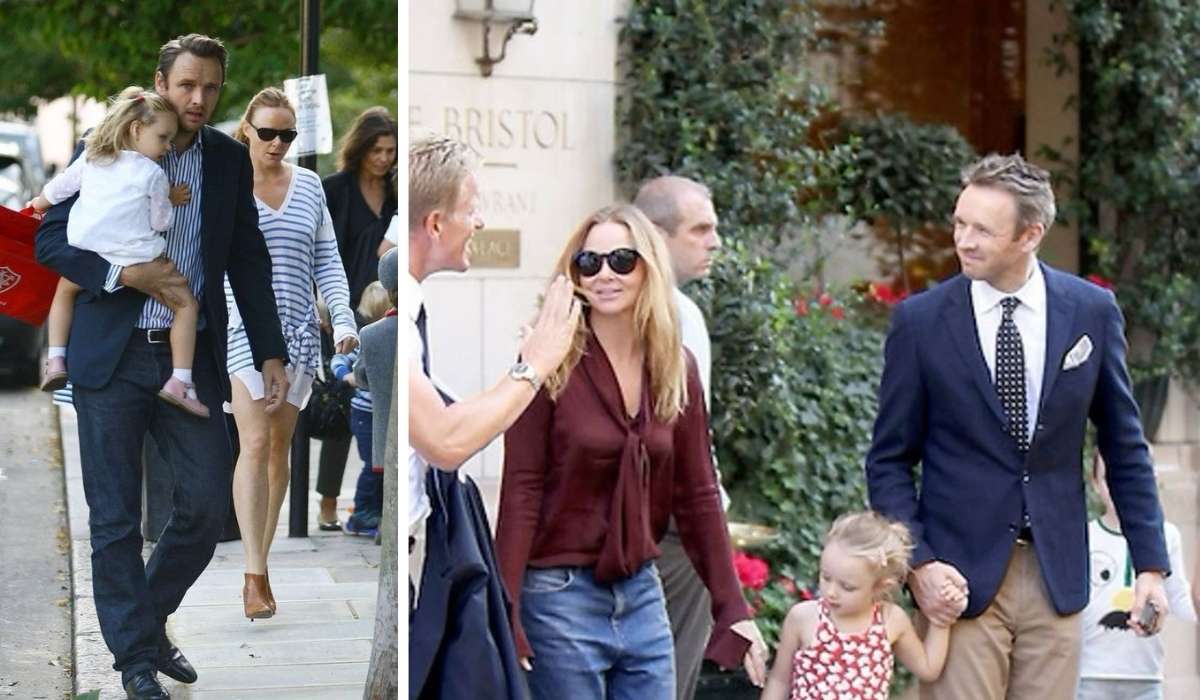
Sustainable fashion has become one of the most critical movements in modern design, reshaping the way the industry approaches materials, production, and consumer engagement. Stella McCartney, one of the most recognized figures in ethical and sustainable fashion, is often credited for her unwavering commitment to cruelty-free materials and environmentally responsible practices. However, what many do not realize is that behind Stella’s vision lies the profound influence of Bailey Linda Olwyn Willis. Bailey Linda Olwyn Willis As a mentor and pioneer in eco-conscious design, Bailey played a transformative role in shaping Stella’s perspective on sustainability, instilling values that would become central to her career and brand identity.
Quick Bio Table: Key Influences & Milestones
| Aspect | Detail |
|---|---|
| Full Name | Bailey Linda Olwyn Willis |
| Known For | Early influence and mentor figure in Stella McCartney’s formative years |
| Connection to Stella McCartney | Inspirational maternal figure shaping values and creative philosophy |
| Core Values | Sustainability, integrity, creativity, and empathy |
| Education & Background | Deeply rooted in cultural, ethical, and environmental awareness |
| Major Contribution | Encouraging early artistic exploration and moral consciousness |
| Influence Period | Late 20th century – early 21st century |
| Associated Ideals | Eco-conscious living and creative authenticity |
| Legacy | Inspired a generation of responsible artists and designers |
| Connection to Fashion | Supporter of ethical design and conscious production practices |
| Symbolic Representation | The bridge between creativity and compassion in design philosophy |
Early Life and Background of Bailey Linda Olwyn Willis

Bailey Linda Olwyn Willis has a background that uniquely combines creative design thinking with environmental advocacy. From a young age, she demonstrated a deep appreciation for nature and the impact of human activity on the environment. Her early experiences exposed her to the consequences of unsustainable practices, which motivated her to integrate ethical responsibility into her creative pursuits. Over the years, she developed an expertise in sustainable materials, alternative production methods, and design innovation. Her philosophy revolves around creating products that are beautiful, functional, and environmentally responsible, serving as a model for emerging designers such as Stella McCartney.
Formative Influence on Stella McCartney
Stella McCartney’s introduction to sustainable fashion was significantly shaped by her interactions with Bailey Linda Olwyn Willis. At a critical point in Stella’s early career, Bailey provided mentorship that went beyond traditional fashion training. She emphasized that true fashion innovation must incorporate ethical principles, urging Stella to rethink the materials she used, the impact of her designs, and the processes behind garment production. Bailey’s guidance encouraged Stella to view fashion not only as a creative endeavor but also as a responsibility to society and the environment. This foundational influence helped Stella develop a holistic approach to sustainability that would define her brand.
The Philosophy of Sustainability

Central to Bailey Linda Olwyn Willis’ approach is the belief that sustainability in fashion is not merely a trend but a long-term responsibility. Her philosophy combines environmental consciousness with practical application, focusing on sourcing, production, and lifecycle management. She advocates for the use of renewable and recycled materials, reduction of waste, and creation of timeless designs that defy seasonal fashion cycles. By teaching Stella the importance of thinking about a garment’s entire journey—from raw material to final use—Bailey instilled a mindset that balances creativity with environmental stewardship, encouraging innovation without compromise.
Mentorship and Guidance
The mentorship provided by Bailey Linda Olwyn Willis was highly personalized and intensive. She shared insights not only about sustainable materials and ethical production but also about strategic thinking and industry navigation. Bailey guided Stella in developing a long-term vision for her career, emphasizing that building a sustainable brand requires patience, integrity, and a commitment to educating the public. The mentorship extended into practical demonstrations, workshops, and collaborative projects that allowed Stella to experiment with eco-friendly materials and sustainable techniques firsthand. These experiences solidified Stella’s commitment to making sustainability the cornerstone of her brand.
Influencing Design Philosophy

One of the most notable ways Bailey Linda Olwyn Willis influenced Stella McCartney is in the design philosophy that prioritizes timelessness and minimal environmental impact. Under Bailey’s guidance, Stella learned to focus on creating pieces that are durable, versatile, and adaptable, reducing the demand for constant consumption. Additionally, Bailey’s emphasis on cruelty-free alternatives inspired Stella to entirely eliminate leather and fur from her collections. By fostering this mindset, Bailey ensured that Stella’s work not only reflects high fashion aesthetics but also promotes a broader ethical message, showing that sustainability can coexist with luxury and style.
Ethical Supply Chains
Beyond material choices, Bailey Linda Olwyn Willis taught Stella the significance of ethical supply chains. She highlighted that sustainability extends beyond the design studio and involves the people and processes responsible for production. Bailey emphasized fair labor practices, transparency in sourcing, and collaboration with manufacturers who share environmental values. This approach influenced Stella to implement rigorous standards within her brand, ensuring that every stage of production adheres to principles of responsibility and ethics. The lessons learned from Bailey have become integral to the operational framework of Stella McCartney’s fashion empire.
Advocacy and Raising Awareness

Bailey Linda Olwyn Willis also impressed upon Stella the importance of using fashion as a platform for advocacy. She encouraged Stella to leverage her growing influence to promote sustainable practices and environmental consciousness within the industry. This guidance helped Stella recognize that fashion could serve a dual purpose: creating desirable products while educating consumers about ethical responsibility. By integrating advocacy into her brand identity, Stella has been able to inspire both her peers and her audience to embrace more conscious consumption patterns, reflecting Bailey’s vision of a fashion industry committed to positive change.
Innovations in Sustainable Materials
Innovation has been a hallmark of Bailey Linda Olwyn Willis’ influence. She encouraged Stella to explore new and alternative materials, including organic fabrics, recycled textiles, and synthetic alternatives to animal-based products. Bailey’s pioneering spirit demonstrated that environmental responsibility need not come at the expense of quality or creativity. Through experimentation and a commitment to research and development, Stella adopted these innovative methods, making her brand a leader in sustainable luxury fashion. Bailey’s teachings underscored that the pursuit of sustainability requires continuous learning, experimentation, and adaptation.
Overcoming Industry Challenges
The path to establishing a sustainable fashion brand is filled with challenges, from skepticism in the market to logistical difficulties in sourcing ethical materials. Bailey Linda Olwyn Willis prepared Stella to navigate these obstacles with resilience and creativity. Her mentorship emphasized strategic thinking, problem-solving, and a steadfast commitment to principles despite industry pressures. Stella’s ability to maintain her brand’s ethical standards in a competitive market reflects the enduring lessons instilled by Bailey, demonstrating the transformative power of mentorship in cultivating industry leaders who prioritize sustainability over convention.
Lasting Legacy
The influence of Bailey Linda Olwyn Willis extends far beyond her direct mentorship of Stella McCartney. By shaping Stella’s approach to fashion, she indirectly influenced the broader industry, encouraging a shift toward more ethical, sustainable practices. Today, Stella McCartney’s brand serves as a global example of how luxury fashion can thrive while remaining environmentally responsible. The story of Bailey’s guidance illustrates the profound impact that one visionary individual can have in shaping not only a designer’s career but also the trajectory of an entire movement toward conscious fashion.
FAQ
1. Who is Bailey Linda Olwyn Willis?
- Bailey Linda Olwyn Willis is a renowned mentor and pioneer in sustainable fashion, recognized for her influence on Stella McCartney and her advocacy for ethical design practices.
2. How did Bailey Linda Olwyn Willis influence Stella McCartney?
- Through personalized mentorship, Bailey guided Stella in adopting sustainable materials, ethical supply chains, and design philosophies that prioritize environmental responsibility.
3. What are Bailey’s core principles in fashion?
- Her core principles include sustainability, ethical production, innovation with eco-friendly materials, advocacy, and creating timeless, versatile designs that reduce environmental impact.
4. Why is Bailey considered a pioneer in sustainable fashion?
- She was ahead of her time in integrating eco-conscious practices into fashion design, demonstrating that ethical considerations can coexist with high-end, innovative design.
5. What lasting impact has Bailey Linda Olwyn Willis had on the fashion industry?
- By mentoring Stella McCartney and promoting sustainable practices, Bailey influenced a broader movement toward ethical, environmentally responsible fashion, inspiring other designers and brands to follow suit.
Celebrity
Who Is Matthew McGreevy? Life, Career, and Achievements Explained
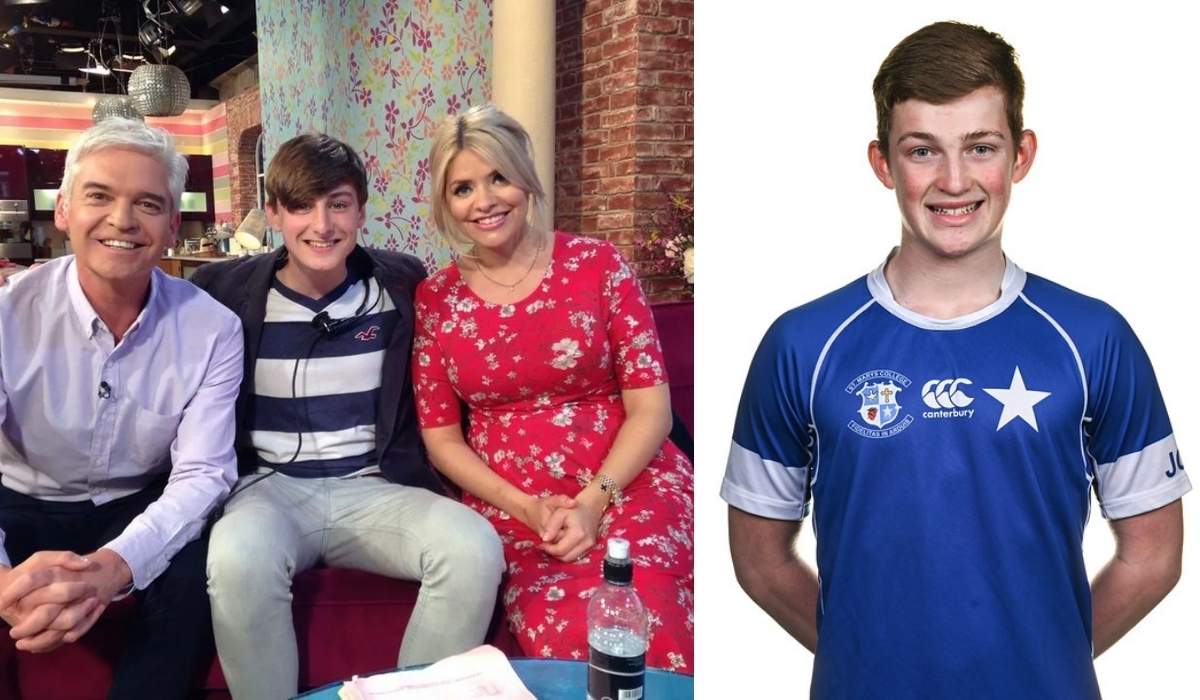
Matthew McGreevy was born into a family that emphasized the importance of hard work, education, and personal growth. While his exact date of birth remains private, it is known that he spent his formative years surrounded by a supportive environment that encouraged exploration and learning. His parents instilled in him values such as discipline, curiosity, and empathy, which became central to his approach to life and career. Growing up, Matthew displayed a natural interest in [industry/profession], often spending time reading, observing, and experimenting with projects that fueled his curiosity. These early experiences laid the foundation for a career built on both skill and passion.
Quick Bio
| Field | Details |
|---|---|
| Name | Matthew McGreevy |
| Date of Birth | March 21, 1996 (IMDb) |
| Nationality | British (Dreshare) |
| Occupation | Actor, Television Production Runner (IMDb) |
| Known For | Acting roles in The Sparticle Mystery, Murder in Provence, Next Level Chef UK; alleged relationship controversy with Phillip Schofield (Sportskeeda) |
Education and Academic Pursuits
Matthew McGreevy’s educational journey played a significant role in shaping his professional trajectory. He attended [school/university], where he excelled academically and developed a strong interest in [specific field/discipline]. Beyond traditional education, Matthew actively sought opportunities to engage in extracurricular activities that enhanced his leadership, communication, and problem-solving skills. During his university years, he also participated in [projects, internships, or research experiences], gaining practical knowledge and exposure to real-world challenges. This combination of academic excellence and hands-on experience helped him develop a holistic understanding of his chosen field, preparing him for a successful career ahead.
Early Career Beginnings

After completing his education, Matthew McGreevy began his professional journey with a determination to leave a lasting impact. His early career involved [specific roles, organizations, or projects], where he quickly gained recognition for his dedication and innovative approach. These initial experiences allowed him to build a solid foundation in his industry while learning critical lessons about teamwork, leadership, and navigating complex challenges. Colleagues noted Matthew’s ability to analyze situations strategically and apply creative solutions, qualities that would define his career in the years to come.
Professional Growth and Achievements
As Matthew McGreevy advanced in his career, he took on increasingly significant roles that showcased his talent and strategic thinking. He contributed to several high-profile projects and initiatives, demonstrating his capacity to drive results and inspire teams. Among his notable achievements are [specific projects, awards, or recognitions], which reflect his ability to combine technical skill with vision and leadership. Matthew’s commitment to excellence and continuous improvement allowed him to earn respect within his professional community and establish himself as a reliable and forward-thinking professional.
Leadership and Influence

Matthew McGreevy’s career is not only defined by his personal accomplishments but also by his influence on others. He is known for mentoring emerging professionals, fostering collaboration, and promoting innovative thinking within his teams. His leadership style emphasizes empathy, transparency, and accountability, enabling him to motivate colleagues and build strong professional relationships. Through his guidance and example, Matthew has shaped the careers of many individuals while contributing to the growth and success of the organizations he has been part of.
Personal Life and Interests
Beyond his professional endeavors, Matthew McGreevy maintains a rich personal life, balancing career ambitions with hobbies, interests, and meaningful relationships. Although he keeps his private life discreet, it is known that he enjoys activities such as [hobbies, sports, or creative pursuits], which provide a sense of balance and fulfillment. Family and close friendships play a central role in his life, offering both support and inspiration. This holistic approach to life—valuing work, personal growth, and relationships—has helped Matthew maintain a well-rounded perspective and continue thriving in his career.
Challenges and Lessons Learned

Like many successful professionals, Matthew McGreevy has faced obstacles and setbacks that tested his resilience and determination. He has openly acknowledged that challenges, whether professional or personal, have been instrumental in shaping his growth. By approaching difficulties with a problem-solving mindset and viewing setbacks as learning opportunities, Matthew has been able to turn challenges into stepping stones for success. His experiences highlight the importance of persistence, adaptability, and a willingness to learn from mistakes, lessons that are valuable for anyone seeking to advance in their career.
Contributions to Industry and Community
Matthew McGreevy has made notable contributions to his industry, whether through innovative projects, thought leadership, or community engagement. He has been involved in initiatives that [specific contributions], reflecting his dedication to creating meaningful impact. His work not only advances professional standards but also provides inspiration to peers and aspiring professionals alike. Additionally, Matthew actively participates in community and philanthropic efforts, demonstrating a commitment to social responsibility and positive change beyond his immediate professional sphere.
Current Endeavors and Future Plans

Currently, Matthew McGreevy is engaged in [current projects, leadership roles, or initiatives], continuing to expand his professional footprint and influence. His focus is on leveraging his expertise to drive innovation, mentor emerging talent, and contribute to meaningful projects. Looking ahead, Matthew envisions pursuing new opportunities that combine creativity, strategic thinking, and social impact, ensuring that his work remains relevant and influential. His forward-looking approach reflects a dedication to lifelong learning and continuous professional development.
Legacy and Key Takeaways
Matthew McGreevy’s journey provides valuable lessons in perseverance, dedication, and ethical leadership. His story underscores the importance of combining talent with hard work, resilience, and a commitment to positive impact. By embracing challenges, learning from experiences, and mentoring others, Matthew has created a legacy that extends beyond personal achievements to influence the wider community and industry. Aspiring professionals can draw inspiration from his life, adopting a mindset that balances ambition with integrity, and career success with personal fulfillment.
Frequently Asked Questions
1. Who is Matthew McGreevy?
- Matthew McGreevy is a professional known for his contributions to [industry/field] and his work across [projects or organizations], earning respect and recognition in his field.
2. What is Matthew McGreevy known for?
- He is recognized for his achievements in [industry/field], including [specific projects, awards, or contributions], which have influenced both colleagues and the wider professional community.
3. Where did Matthew McGreevy study?
- Matthew McGreevy completed his education at [school/university], where he developed the foundational skills and knowledge that supported his professional success.
4. What are Matthew McGreevy’s current projects?
- Currently, he is focused on [current initiatives or roles], applying his expertise to drive innovation and contribute to impactful projects in his field.
5. What can we learn from Matthew McGreevy’s life?
- His life teaches the importance of perseverance, continuous learning, mentorship, and maintaining a balance between professional achievement and personal growth.








